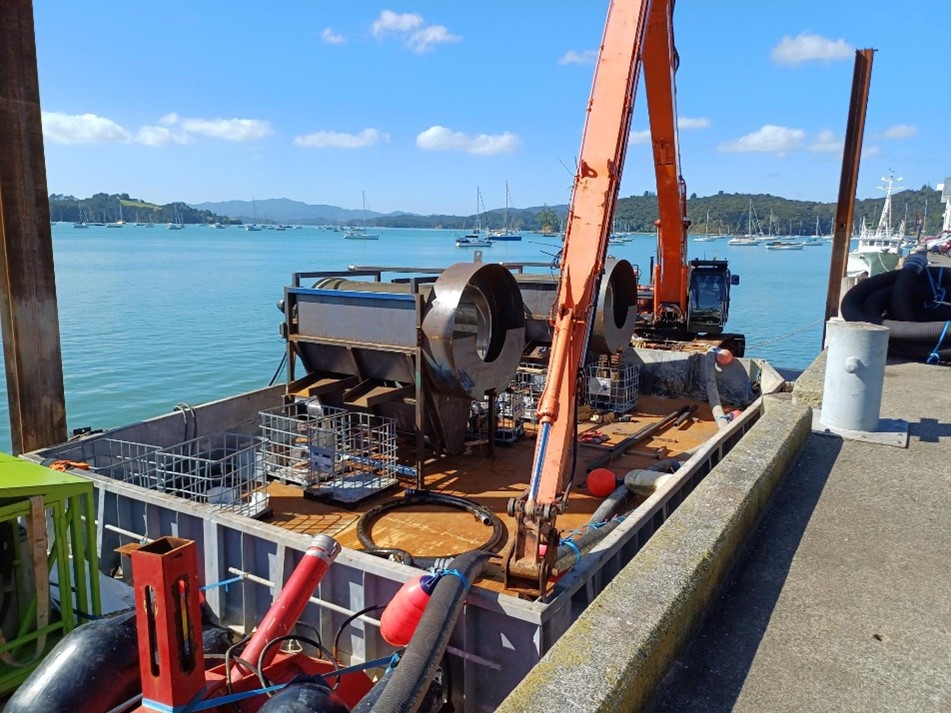Developing ways to tackle exotic caulerpa
Exotic caulerpa is a challenging pest to manage with its ability to spread rapidly and grow on a range of seabed surfaces and at varying depths. At the time of its first detection at Aotea Great Barrier Island in 2021, it was well established. It is estimated that it had already been here for a number of years.
There are no control tools available globally to combat exotic caulerpa at the scale it is present in New Zealand.
However, Biosecurity New Zealand and partners continue with a comprehensive programme of research and development to find options to tackle exotic caulerpa – potentially to eliminate it in significant areas or locations where there is a high volume of vessel traffic.
There have been a couple of significant funding allocations to boost this research:
- $5 million in February 2024, which funded 6 projects to accelerate work on improved surveillance and new removal technologies
- a further $10 million in August 2024 to fund the development of 3 specific treatment tools.
Media release: Multi-million-dollar exotic Caulerpa control tool projects underway – Beehive
Media release: Further funding boost for second phase in exotic caulerpa battle – Beehive
Current removal technology projects
Three projects were funded from the $10 million allocated in August 2024:
- a UV-C light array to irradiate caulerpa
- an enclosure to target chlorine treatment
- a submersible dredge planer that aims to dredge caulerpa from the seabed in a single pass.
UV-C light array

Advanced Aquarium Technologies Ltd developed and are trialling a cost-effective option to treat exotic invasive caulerpa without needing to deploy SCUBA divers.
Taking a lab-proven method of using UV-C light to irradiate exotic caulerpa, the team has scaled it up to destroy large areas of the seaweed pest in the field.
Video showing the UV-C light array being trialled at sea.
Using UV-C light to destroy exotic Caulerpa (3.03) – YouTube
The trials were completed in August 2025 and this report on the project documents the development of the UV-C light tool, the testing process and the results of field trials at Omakiwi Cove, Northland and Waiheke Island.
'Rehabitat' chlorine enclosure

The 'Rehabitat' chlorine enclosure is developed by Commercial Dive Specialists (CDS) and builds on a known effective treatment – applying chlorine under benthic mats (which are essentially mats on the seafloor with chlorine underneath).
The innovative new device is a large (75 square metres), inflatable unit that uses negative pressure to suction to the seabed, containing chlorine in the area under treatment. Separate modules can be tethered together to quickly treat very large areas of dense caulerpa.
This video shows the CDS team showcasing their removal technique.
Innovative seabed enclosure targets caulerpa with chlorine (2.41) – YouTube
Below is an interim report into the development of the Rehabitat and results of trials in the waters of Omakiwi Cove, Northland.
Rehabitat Interim report [PDF, 3.8 MB]
Large-scale submersible dredge planer
The third project is being managed by Northland Regional Council and is still in the design and development phase.
Other caulerpa control methods
In addition to these large-scale tools, the development and testing of alternative control methods (including the application of salt, biodegradable mats (whāriki), ultrasonic noise lab trials, anchor cleaning tools, and hand removals) have been funded over the past 4 years.
Reports documenting the development and testing of these tools
These are research and development reports, focusing on the practical aspects of tool development and application. While these reports provide valuable insights into the progress of the tools and their potential uses, they are not intended to be peer-reviewed or quantitative scientific publications.
2024 accelerated programme to fight exotic caulerpa
Following the $5 million funding boost announced in February 2024, 6 projects were set up to accelerate work on removal technologies and improved surveillance.
At Omakiwi Cove in the Bay of Islands, the Northland Regional Council, and mana whenua (funded by MPI) carried out the flagship project to develop a large suction dredge to remove exotic caulerpa in bulk from the seafloor.
The project achieved some significant advances, including creating equipment to remove sand from the dredged caulerpa. Further work was required to achieve faster and more effective removal.

At the Iris Shoal off Kawau Island, a partnership between Ngāti Manuhiri and the National Institute of Water and Atmospheric Research (NIWA) used a smaller-scale suction technique where divers hand-controlled a portable vacuum device. The team managed to remove exotic caulerpa from 1.27 hectares of the seabed and safely disposed of the material at a local landfill.
Other accelerated programme projects
- Managing caulerpa in key areas at Aotea to push back the "creeping" expansion there and help prevent spread to other areas.
- Resurvey the incursion at Ahuahu Great Mercury Island to better understand the population there and inform a possible future suppression or elimination effort.
- Operational research to improve surveillance techniques to locate new areas of exotic caulerpa – being trialled at Waiheke Island. This project saw the successful development of cameras mounted on towed and remote-operated vehicles to find exotic caulerpa and identify it as caulerpa at the same time using artificial intelligence.








